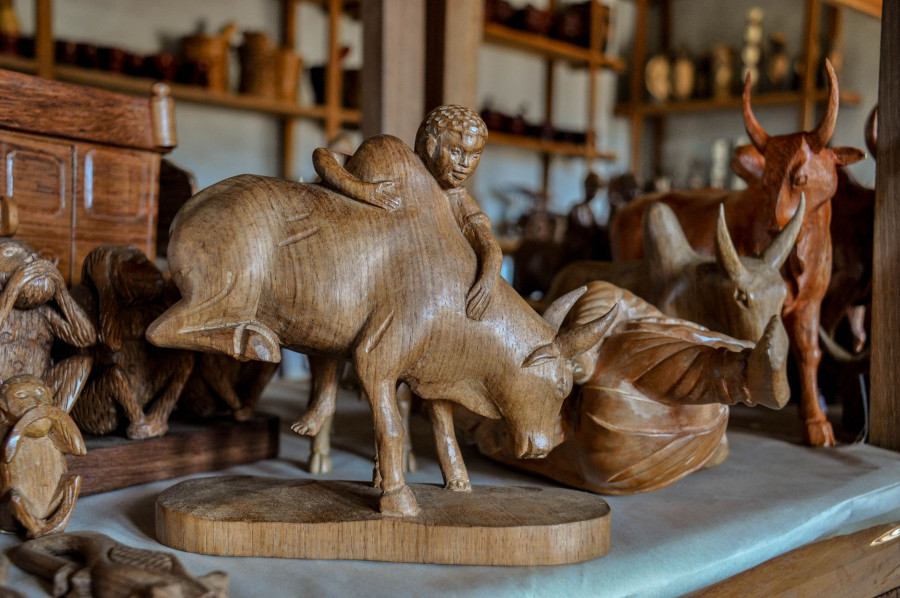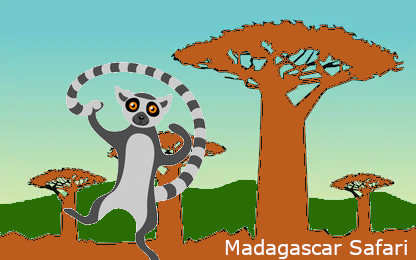- INTRODUCTION
- MALAGASY CULTURE
- MALAGASY TRADITIONAL SPORT
- MALAGASY CUISINE
- BEACHES AND RIVERS
- MONEY AND CREDIT CARDS
- PURCHASE TIPS
- SITES AND ACTIVITIES
- MONUMENTS
- MALAGASY HANDICRAFTS
- TIPS FOR TRAVELLERS
- MADAGASCAR CONNECTING FLIGHTS
- MADAGASCAR NATIONAL PARKS AND RESERVES
- FAUNA AND FLORA OF MADAGASCAR
- PUBLIC HOLIDAYS IN MADAGASCAR
- THE SOUTH WEST AND WESTERN REGIONS
- THE SOUTH EAST REGION
- THE NORTH WEST REGION
- THE NORTH EAST AND EAST REGIONS
- THE CENTRAL HIGHLANDS
MALAGASY HANDICRAFTS
Handicraft
The creativity and talent of Malagasy artisans enable them to take the best advantage of all possible materials: earth, wood, fibres, metal, stone, leather and zebu horn, fabric… and even discarded tins which are transformed into model cars amazingly true to the real ones. Shops and markets for handicrafts are a must for those who want to go home with a souvenir of the country in their luggage. Small towns or villages have ended up in totally immersing themselves in their speciality and handicraft has also become present along a few national roads. The choice is therefore unlimited, but four sectors particularly stand out of the many and have become the symbols of Madagascar, the same way as lemurs or orchids.
This art, classified as World intangible Heritage by Unesco, was revealed to the public in the fifties, when food shortage obliged this population of foresters to sell their furniture and sculptures on the market. It was a great discovery for the public, both local and foreign. Zafimaniry Art expresses itself through daily life objects (honey pots, weaving-looms, stools, plates …) as well as construction parts (doors and windows). On the market, it is synonymous of up the market furniture, statuettes and sculpted panels, parlour games but, unfortunately, there is also a lot of forgery. If you ask Zafimaniry artisans about the significance of their sculpture whose motifs somehow call in mind the rosette, saint andre cross or even the union Jack, they will simply answer this is the way their ancestors had already carved wood.
Antemoro Paper
The Antemoro, or the “people from the shores” live on the southwest coastal plain and Vohipeno is for them a holy town. Very much involved in esoteric sciences, their name is to be linked with the precious arabico- malagasy manuscripts, the “Sorabe”, calligraphed with a bamboo stick on paper made of boiled, kneaded then smoothed bark. In the thirties, the process migrated to Ambalavao in the south of Fianarantsoa, where a workshop launched the production of paper known as “antemoro”, often decorated with flower patterns. It is used in book-binding, luxury cards and albums, tapestry as well as home decoration. Some workshops have succeeded in making paper so thin that one cannot but marvel at its beauty.

Mohair carpets
Ampanihy is a small isolated town in the deep remote south between Tulear and Taolagnaro. Women of this village have woven wool for generations, and it is not surprising that the main piece of furniture in most homes is a weaving- loom. Ampanihy tapestry is produced at two levels: the one is a family home industry, performed by family members for their own account using the local wool, and the other is at a workshop level with imported material, the angora wool, but employing the same people. With new techniques, it is now possible to have a “hand-knotted” carpet of 70 000 knots by square meter. It is the guarantee for a thick, comfortable, pleasant to live with carpet. Patterns are inspired from the Mahafaly and Antandroy cultures, in a range of very trendy nuances but with an exotic touch here and there.
Wildsilk
Wild silk called “Landibe” exists nowhere else but in Madagascar, as its worm feeds itself exclusively with an endemic plant, the tapia. Worked into flocks from cocoons collected in nature, its texture is rough and only vegetable dye is used, like the nato for red, indigo-plant for blue and rice for white. Until recently, wild silk was only used for shrouds. The contact with a clientele from abroad helped to take away its sacred aura and to launch it into the world of fashion. It has become of great value in home decoration and has penetrated the garment market: scarves, waistcoats, coats, shoes, cocktail dresses… international fairs have promoted the encounter between the raw “landibe” and the european ine silk. A true culture shock!
